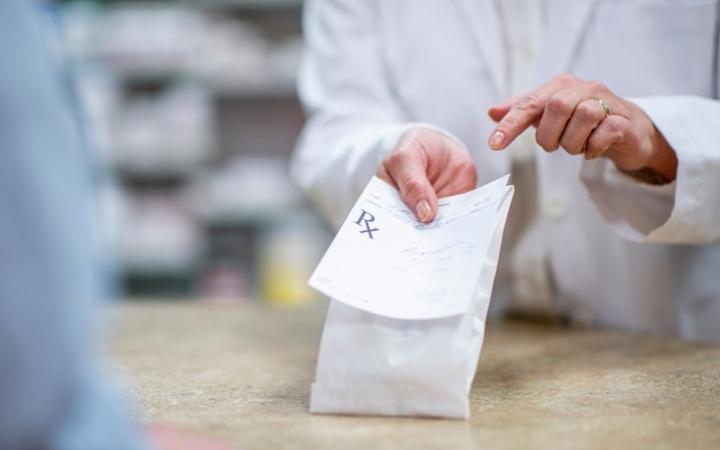
Get answers to the top five questions pharmacists have been asking about natural therapy so you can start dispensing these products from your pharmacy and confidently counsel patients.
Whether your pharmacy is already filling natural therapeutic scripts or you’re about to start, this blog will provide you with answers to the most frequently asked questions from Australian pharmacists on cannabinoids and the natural therapy prescription process.
What to do if a patient presents a script for natural therapeutics
As most natural therapeutics are still deemed unapproved therapeutic goods, patients must have a prescription from their doctor with a corresponding TGA approval to be able to access this medicine from a pharmacy.
Before dispensing natural therapeutics, the first step is to check legislation to ensure your pharmacy meets all legal requirements set by the Australian Government and relevant state/territory health departments.
When you receive a prescription for a natural therapeutic in your pharmacy, you can then take the following steps to fill the script and dispense the prescribed product with confidence:
Step 1: Open wholesale account on Canview
As Australia’s leading platform for pharmacists to order and dispense natural therapeutics online, registering an account on Canview is a great place to start. Pharmacists can utilise Canview’s smart ordering technology to check stock levels, compare pricing, place orders and reorder easily. Registering takes under five minutes. All that is required to verify your account is your pharmacy details, as well as your AHPRA number and certificate.
Step 2: Check script & TGA approval
When you receive a natural therapeutic script, check to ensure all details on the prescription match what is on the TGA approval document, including the patient’s name, prescribing doctor, active ingredient category and the dosage form (e.g. Category 5 Oral Liquid).
Step 3: Order prescribed product
Upload the required documentation for each patient on Canview to create an order. You can products for multiple patients at once by uploading numerous patient approval documents to consolidate your orders each day. Once you checkout, your patient’s prescribed product/s will be sent direct to your pharmacy via a free express shipping service within one to three days.
Step 4: Dispense product from pharmacy
When the order arrives in your pharmacy, notify your patient that their order is ready to be picked up or delivered. Dispense the product as per your usual process for the specific product schedule each product falls under.
What are the side effects and contraindications of natural therapeutics?
Advising patients of any potential side effects and contraindications is another important role pharmacists can perform to ensure safe and appropriate use of natural therapeutics. Just like any prescription medicine, some patients may experience certain side effects when using natural therapeutics.
The known side effects for natural therapeutics, according to the Therapeutic Goods Administration (TGA) [1], are:
- fatigue and sedation
- vertigo
- nausea and vomiting
- fever
- decreased or increased appetite
- dry mouth
- diarrhoea
The TGA also suggests that natural therapy is not appropriate for:
- people with an active or previous psychotic or active mood or anxiety disorder
- women who are pregnant, planning to become pregnant or breastfeeding
- people with unstable cardiovascular disease
According to the USA’s National Center for Biotechnology Information, interactions with other drugs metabolised by CYP2C19 can be anticipated. Interactions were also reported with combined use of alternative treatments and warfarin.[2]
Some studies have also revealed that natural therapeutics can interact with cytochrome P450 (CYP) enzymes, suggesting that CBD and THC can inhibit the metabolism of common CYP-metabolized drugs.[3]
As most of the alternative medicine products your patients will have scripts for are unregistered therapeutic goods, consumer medicines information (CMI) and product information (PI) may not be available through the standard recourses your pharmacy may typically use.
However, you can generally find any CMI and PI details from the natural therapeutic wholesaler or direct from the Canview platform when you register as a pharmacist.
To learn more about side effects and contraindications of natural therapeutics, pharmacists can register on Canview to enrol in our free natural therapy training course.
What schedule is natural therapy categorised under?

Knowing what schedule natural therapy falls under will help your pharmacy team understand the legislation that needs to be followed when ordering, storing and dispensing these products.
Currently, most natural therapeutics fall under either a Schedule 4 or Schedule 8 medicine, as per the Poisons Standard set out by the Australian Federal Register of Legislation. As CBD and THC are the two main compounds, the drug schedule depends on the content of CBD and THC in each product.
Patients entering your pharmacy with a script for natural therapeutics may be prescribed a CBD-only product, a THC-only product or a CBD/THC balanced product which has a combination of both cannabinoids.
Each script and TGA approval should specify which Schedule each product is classified in, as well as the category it falls under. Here’s a quick guide to help your pharmacy team understand how each TGA category fits into each Schedule:
- Category 1 | CBD >98% (Schedule 4)
- Category 2 | CBD >60% – <98% (Schedule 8)
- Category 3 | CBD <60% – >40% (Schedule 8)
- Category 4 | THC 60-98% (Schedule 8)
- Category 5 | THC >98% (Schedule 8)
Although categories are more relevant to the prescribing doctor, pharmacists may substitute between different products within each category if the doctor has specified this on the script.
If you are unsure, speak to the prescribing doctor who can advise you on whether substitution is permitted in the case that your patient is requesting a different brand, or a particular product or brand is unavailable.
Please note, as most natural therapeutics have not been assessed for safety and efficacy by the TGA, they are not registered on the Australian Register of Therapeutic Goods (ARTG).
Can I store natural therapeutics in my pharmacy?

Another common question we receive from pharmacists relates to the storage of natural therapeutics in pharmacies.
Natural therapeutics can be stored in Australian pharmacies, however just like any prescription medication, there are some storage regulations pharmacists must follow. We’ve put together some tips to help your pharmacy team store and dispense natural therapeutics with confidence.
- The temperature for most natural therapeutics must be below 25°C and out of direct sunlight
- Maintain stable humidity levels. High humidity can become breeding grounds for mould and mildew, and lower humidity can result in flower drying out and degradation of cannabinoids and terpenes
- Simplify your dispensing process by separating alternative medicine products from the other S4 and S8 medicines, with a zone set specifically for packing and checking these prescriptions
- S4 products (Category 1: CBD 98%) must be stored in a room or refrigerator which is not accessible by the public such as the dispensary
- S8 products (Category 2: CBD 60% and < 98%, Category 3: CBD < 60% and 40%, Category 4: THC 60% – 98%, Category 5: THC > 98%) must be stored separately from other drugs
- S8 products must be stored in a locked safe (use your current S8 safe for 3-5 scripts per day or consider investing in a separate larger safe for 20 scripts per day)
- S8 transactions must be recorded and records must always reflect the physical balance in the pharmacy’s S8 room or safe
For more information, read our blog on how to store natural therapeutics in your pharmacy.
How can I learn more about natural therapy?

To familiarise yourself with the legalities surrounding natural therapy in Australia, the first place to look is on the TGA’s website.
Registering on Canview is another great place for pharmacists to begin their cannabinoid dispensing journey. Due to advertising and regulatory requirements in Australia, natural therapy product information such as pricing and specifications are not available to the public. As a registered pharmacist on Canview, you are granted special access to view all the products and information you require to fulfil scripts and dispense natural therapeutics.
Once registered, you will also receive free access to educational material including an alternative medicine training course, downloadable resources (e.g. dosing information, pharmacy information packs) and educational videos.
This will help you and your team become experts in natural therapy and have the knowledge to confidently counsel patients before they enter your pharmacy with a script.
To begin dispensing natural therapeutics and get free access to educational resources, register your free pharmacy account on Canview here.
References:
[1] https://www.tga.gov.au/publication/guidance-use-medicinal-cannabis-australia-patient-information
[2] https://www.ncbi.nlm.nih.gov/pmc/articles/PMC7055953/
[3] https://clinicaltrials.gov/ct2/show/NCT04201197
Disclaimer:
The contents in this article do not constitute legal advice, are not intended to be a substitute for legal advice and should not be relied upon as such. You should seek legal advice or other professional advice in relation to any matters you or your organisation may have. Information in this article was correct at time of publishing but please check your own state regulations for updates.
Canview does not endorse the use of natural therapy without lawful prescription. Just like any medicine, natural therapy may have both positive and negative side effects on the user and should only be prescribed to patients by a health professional with the authority and expertise to do so. The information provided by Canview is for informational and educational purposes and is of a general nature. Patients considering natural therapy are advised to speak to their general practitioner first to see if it’s a suitable therapy.
